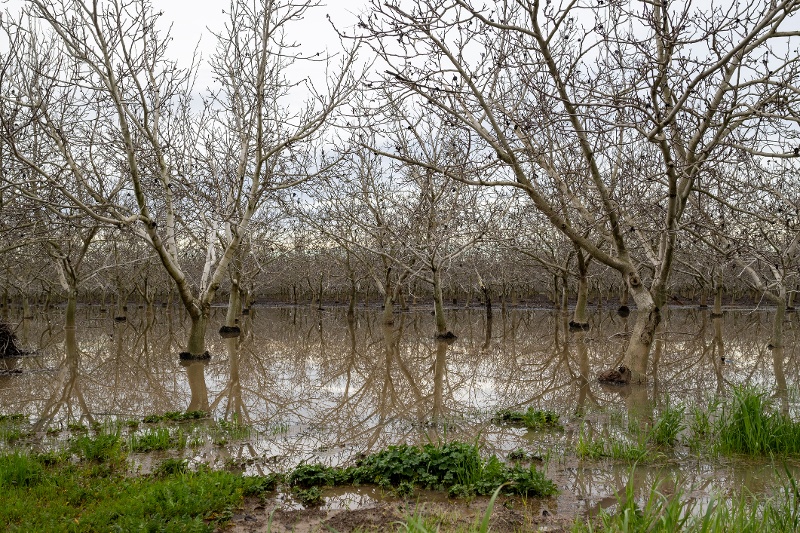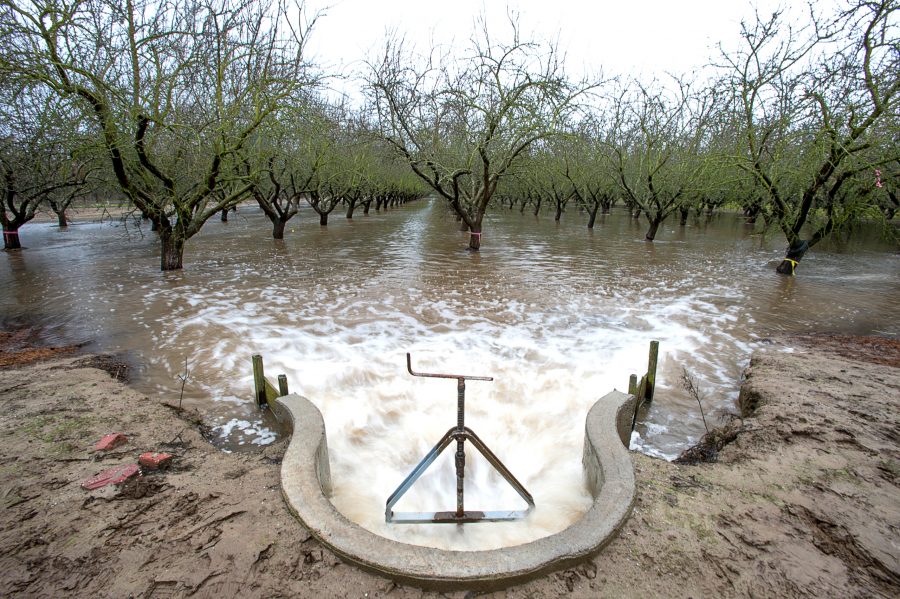Winter rains bring opportunity in California agriculture—if the water can be used or stored. Since December, a series of nine atmospheric rivers has delivered a degree of drought relief to the state, building the snowpack in the mountains and filling reservoirs between 40% and 50% of capacity, with some higher. But the intense storms also caused many smaller rivers and streams to flood, resulting in severe damage to communities unable to slow, direct, and capture excess water.
Whether growers can capitalize on this wet winter depends on several factors—from crop and soil type to on-farm infrastructure. To find out more, we caught up with two of the state's leading water experts.
Sarge Green is a water management specialist with the California Water Institute at California State University, Fresno. Green is active in water quality and conservation efforts in the San Joaquin Valley and statewide. Dr. Helen Dahlke is a professor and hydrological scientist at the University of California, Davis, currently working with farmers to study groundwater recharge and its impact on crops.
Storms' effects depend on soil type
Though much agricultural land lies fallow in winter, there are some winter crops, such as barley and wheat, that could benefit from the rains. “It remains to be seen if there will be enough moisture for grain production,” Green says.
But for others, excess moisture can cause stress that hurts rather than helps production. Winter-fruiting citrus trees are vulnerable to mold issues in wet conditions, and most nut trees are dormant in winter, with little need for water. "Bud break for almonds in February is a crucial period where too much moisture can cause reduced production," Green cautions.

With few exceptions—rice being the most notable—most crops will begin to "suffocate" when water sits on top of soil for extended periods of time. The small pockets of space between grains of soil fill with water, displacing the air that roots and soil microbes need. Air, being lighter than water, can’t get back into the soil until the soil pores drain.
Soil type will dictate whether rainfall percolates deep into the ground or is absorbed only in the first few inches of soil, with excess water pooling on the surface. Sandy soils transport water vertically very quickly, while clay soils hold onto the water and can take 30 to 40 days to drain.
"One producer in our study with a crop field comprised of dune sand was able to absorb 13 inches of water in an hour," Dahlke says.
The salinity issue runs deep
For producers contending with rising soil salinity, rain can bring a temporary reprieve. However, Dahlke points out, “while the rain events help flush the salts from the soils, the salts are simply moved downward in the soils towards the groundwater stream, which can deteriorate groundwater quality."
Truly reducing salt content requires an outflow system, so that water that runs through the soil collecting salts can continue to the delta and ocean. But in places like the Tulare basin, Dahlke says, low water table and groundwater levels mean that water can't exit into the delta—and groundwater pumping will continue to exacerbate the salinity problem.
"No matter much rain we get this year," Green cautions, "unless we figure out how to capture and transport that water economically where needed, and reconnect recharge lands so the rain recharges groundwater, the rain will not help us very much."
Using floodwater takes infrastructure
Before drought conditions drove widespread adoption of high-efficiency drip irrigation, much of California agriculture utilized flood irrigation. In these systems, growers opened valves to allow gravity to move surface water from raised canals and ditches to farm fields below.
"Flood irrigation does have some recharge benefits,” Dahlke says. "Some districts and growers have the capability to maintain both flood and micro-drip irrigation systems. For others, it can be too costly to justify [flood irrigation infrastructure for occasional use] when excess surface water is present."
 Photo courtesy Sustainable Conservation
Photo courtesy Sustainable Conservation
“We have a conveyance problem,” says Green: it's costly to pump and move water from where it accumulates to where it's used. However, he believes there are feasible steps that could help growers take advantage of floodwater, such as adjusting regulations quickly during rain events, building check dams in unregulated upper watersheds, and improving the existing canal system to accommodate the higher flow in the event of heavy rain or rapid snowmelt.
Nature provides another option for storing surface water: wetlands and marshes. It's a given that agricultural land will continue to come out of production in California, Green says, and some of that land could be repurposed for conservation and natural water storage. "Reestablishing wetlands within the Pacific Flyway could offer farmers economic opportunities in the form of hunting and USDA conservation program payments. In addition, if farmers controlled that water, there is potential for water transfer and marketing opportunities when we have large rain events."
Taking the long view
Overall, the wet winter is welcome news for California producers—but it doesn't change the big picture: the impact of surface water is brief and limited unless it can be stored, Dahlke says. Storing water underground by recharging aquifers remains the goal, and adaptation remains the strategy.
"California agriculture may look different in the future," Green says. "Adapting to change, optimizing flood water, and reconnecting our recharge lands are a vital part of that future."
